



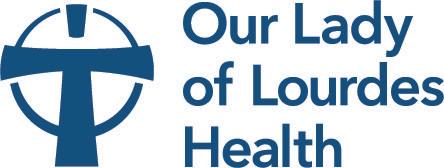












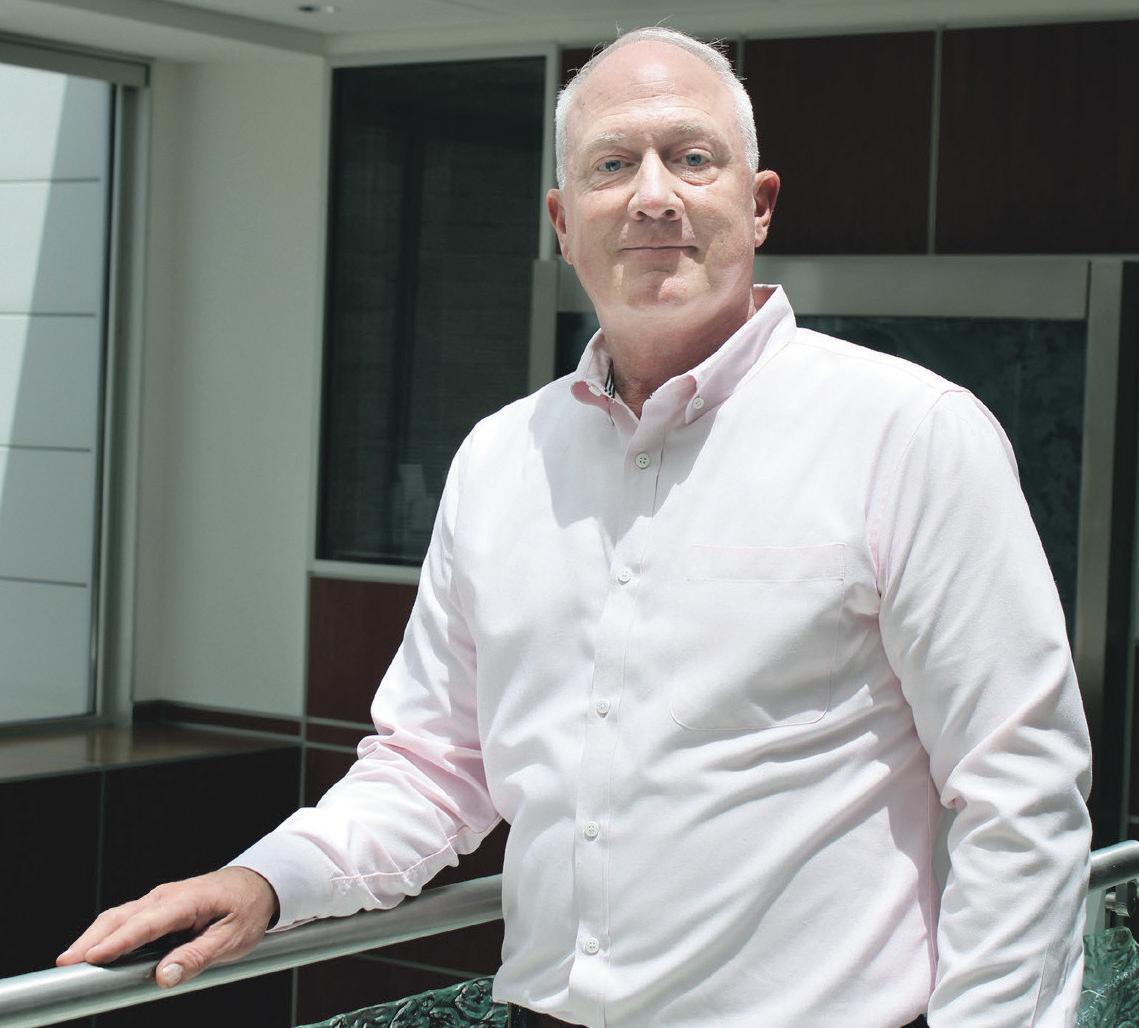
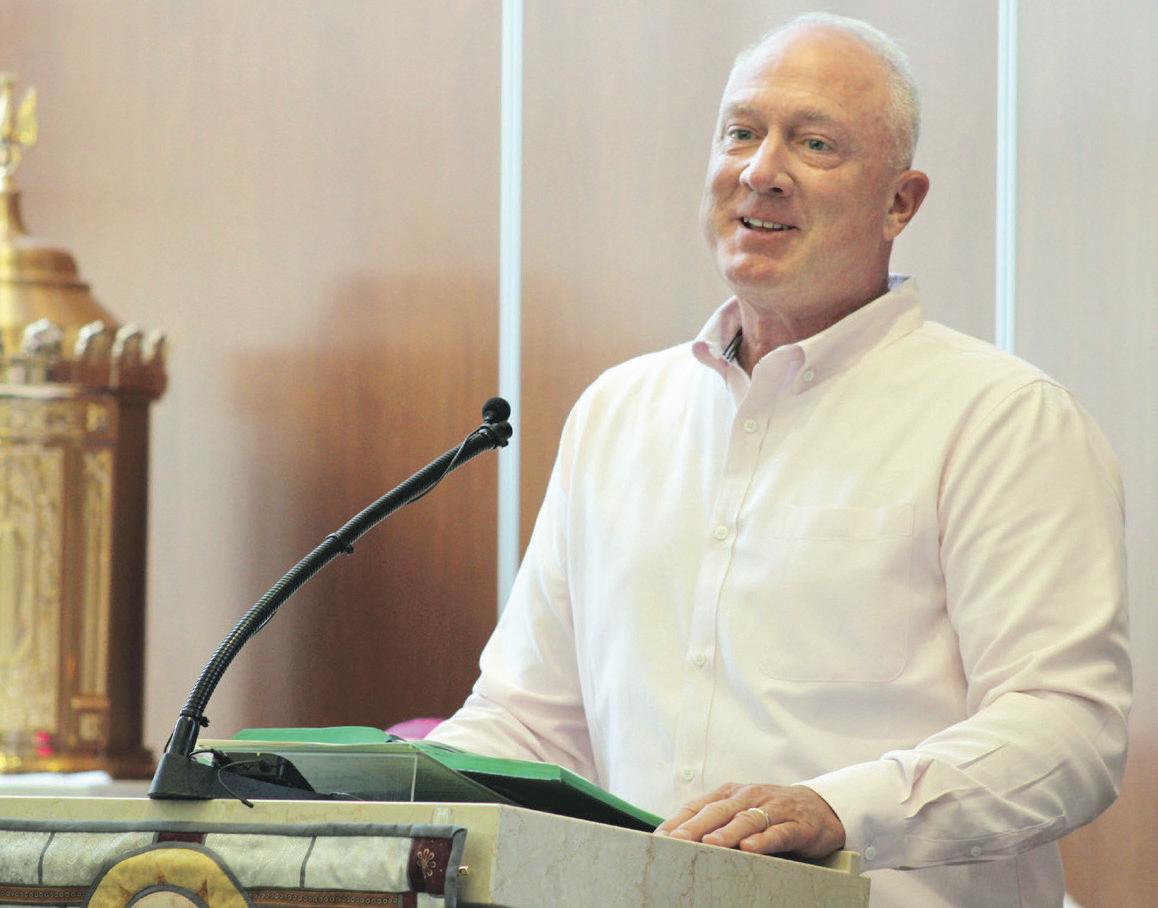

By Stevie Cavalier Licciardi |stevie.licciardi@theadvocate.com
ARichardNash, 57,survived ablood clotnearhis heartand amultiple-cancer diagnosistobecome a“gracioussurvivor”honoredtosharehis story.
fterenjoyinglunch at an area buffetinMarch 2024, RichardNash, 57, experiencedsevereabdominal painsthatcontinued to increase,eventually leadinghim to theOur Lady of LourdesEmergency Department.What happened next no onesaw coming.
Doctorsdiscovereda bloodclotnearNash’sheart.Ifitwentuntreated,theysaid, hemay surviveonlyacouplemoreweeks. So,Nashunderwent surgerytoresolvethe issue. But, that wasjustthe beginning. Whileinrecovery, Nash wastoldhehad stage 4and stage2colon cancer,includingatumor blocking 92% of hisdigestive track, stage1liver cancer,and cancer cellswerefound in hislymph nodes. “I hadfinallyeaten enough that daytotrigger thestomach pain that ledtomy cancer diagnosis,”sharedNash, whorecounted thefirstnight after diagnosis, when family,friends andother lovedoneswenthome, couldhavebeenthe darkestinhis lifewereitnot foranunexpectedinteraction.Dr. BriannaShaffer, thehospitalist assignedtocarefor Nash that evening, took hertimeinthe room talkingabout cats, basketball and, oneofNash’sfavoritepassions,cooking.“Shewas an angel.”
Nash underwent surgery to remove thetumor in hisstomach andother cancerous lesions.Next came 12 rounds of chemotherapy at theOur Lady of Lourdes JD Moncus Cancer Center.Sessionsweresplit –90minutes in theinfusioncenter followedby36hours of chemotherapy with amobileunithecould wear at home and work.Advancements made in chemotherapy andcancertreatment in recent years meantfewer sideeffects, so Nash wasabletomaintaina demandingscheduleas
generalmanager foranareagrocery store.
“Overthe past twotothree decades, cancer treatments have improved significantly,” said Dr.Elias Moussaly,cancerspecialistwiththe JD Moncus Cancer Center whooversaw Nash’s treatment. “Weare relyingonnew treatments such as immunotherapy,radiation therapy, intervention treatments andmore. We arestill usingchemotherapy, as well.Wehavewitnessed more patients surviving, andour hope is to have even more survivorsinthe future.”
WhileNashadmits hisstory is remarkable,his success, he said,ispossiblebecause of the“overwhelmingsupport”offamilyand friends,including histreatment team at OurLadyofLourdes Health
“Dr. Moussaly andthe infusionstaffwereexcellent,”saidNash. “I neverdreaded goingthere.They took such good care of me andtruly gave me so much confidence Even to this day, Irun into my oncologystaffmembers whileI’m outand about, and they’llstillgivemea hug.
Upon diagnosis, Nash wastoldhehad a30-50% chance of survival beyond five years. He is currentlyinremission, butthe possibilityfor recurrence remains.
“I might have anotherbattletogothrough.Ieat healthyand do everythingin my powertokeepmybodywell, butthere is still afearitcould come back,” Nash explained. “I know Ihaveateamofdoctors.Ihavea hospital.Ihavea supportstaff. I know that if Ihavetobattleitagain, I’ll do it even better thenext time.”

Our Lady of Lourdes
Advancedimaging andother diagnostic toolsare increasingthe number of cancersfound in earlier stages, giving patients better odds at survival.But the good news doesn’t endthere,accordingtoVictoriaPlauche,aphysician assistant with theOur Lady of LourdesJDMoncusCancerCenter.
Evolvingsurgicaltechniques, chemotherapy andother treatmentoptions paired with better symptommanagementmeancancercareand treatmentisnot whatpeopleexperiencedevenadecade ago. The overallresult? More people with a cancer diagnosisare living longer andexperiencingfewer treatment-associated complications –likenausea, weakness andpain–thaneverbefore. Likewise,the numberofpeopleinremissionfor fiveyears or more is growing, giving rise to an emerging classofcancer patients in Acadiana– long-termsurvivors
“Wehave18millioncancersurvivors in theUScurrently,” explainedPlauche,who leadsthe OurLadyofLourdes JD Moncus Cancer Center Survivorship Program. “Thosenumbers arepredictedtocontinuetorise.”
Acancer diagnosis, treatmentand recovery affectpatients physically,mentally andspiritually. The cancer center’sSurvivorshipProgram is designedtoaddress




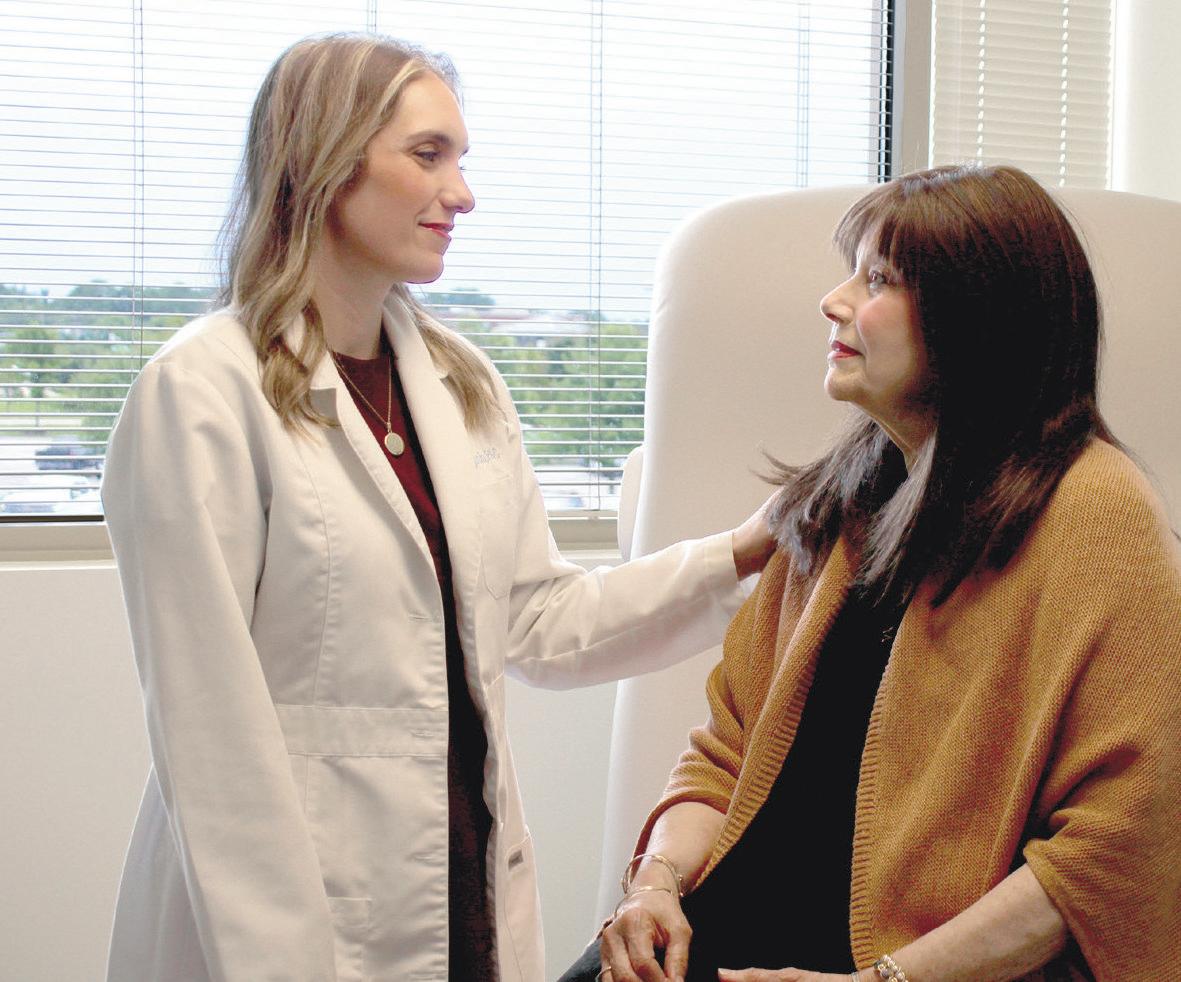
theseaffectsand improvethe long-termhealth, wellness andquality of lifefor every patient.
Patients whocompletetreatment with OurLadyofLourdes Health receivea survivorship care plan,Plauche explained, whichincludesatreatment summary detailingthe therapies received,aswellasnext stepsinthe recovery process. The oncologyteamrelies on labwork, imagingand routinevisitstomonitor apatient’s progress andhelpmanageany long-termaffectsorsymptomsthatmay arise impactinga patient’squality of life.
Once asurvivorhas reachedthe five-year mark,theyqualifyfor asurvivorship visitinaddition to their ongoingfollow-upplan. These annual,hour-long visits are individualizedtomeetthe wellness needsofeachpatient, Plauchesaid. Patients also receiveadditional information on signs andsymptomsthatmay indicatethe cancer hasresurfaced, healthylifestyle choicesand challengesthatarise over time
To getstarted with theSurvivorshipProgram at OurLadyofLourdes JD Moncus Cancer Center,patients need areferralfromtheir primarycarephysician
“It’sreallyrewardingwhenyou work with thesepatients foryears,” Plauchesaid. “It’ssoimportant to me andtoour entire team that we help ourpatients bridgethe gapbetween treatmentand moving back into normal life. We want them to know they arealwaysapartofthe community here;justina newway.”
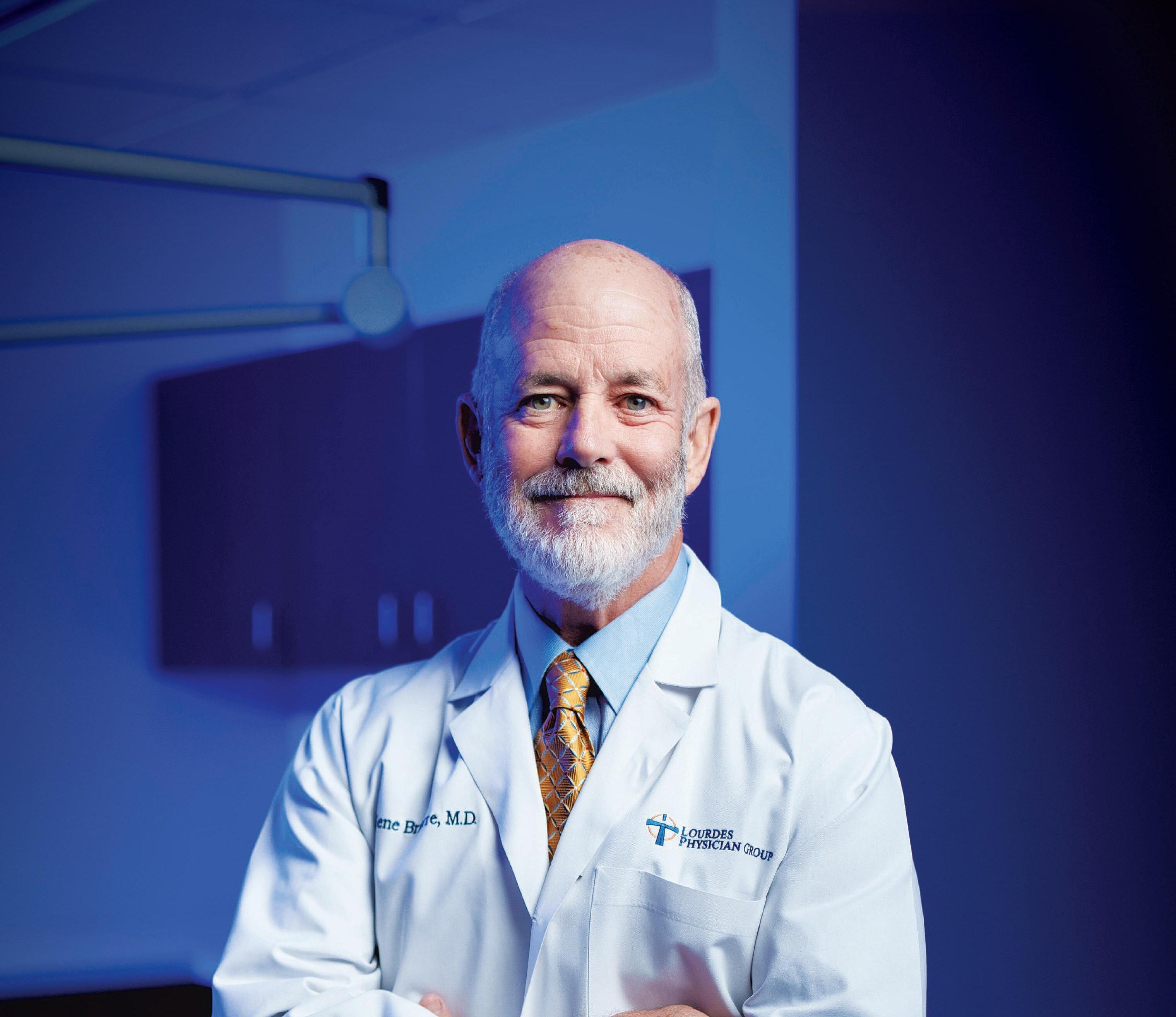

Brierre, MD

















































ANation of Survivors: TheGrowing Hope
(Source:American CancerSociety 2023 Cancer Factsand Figures)
Over 18 million Americans (approx.5.4%of the population) had ahistory of invasive cancer as of January 1, 2022
Survivor Longevity (2022):
• 70% have lived five or moreyears sincediagnosis
48% have lived 10 or moreyears sincediagnosis.
• 19% have lived 20 or more yearssince diagnosis.
FutureProjections:
•Number of survivorsexpected to reach 22.5 million by 2032 and 26.0million by 2040.
•Individuals living 5+ years post-diagnosis projected to reach 19.2 million by 2040 (a 53% increase)
TheCancer Landscape: ProgressAmidstChallenges
(Source:American Cancer Society 2025 Cancer Factsand Figures)
•2025Projections: Over 2million newcancer cases and more than 618,000 deaths. Canceris thesecond leading causeof death in the U.S.
•Death Rate Decline: Theoverall age-adjustedcancer death rate fell by 34% fromits peak in 1991 through 2022, translating to nearly 4.5million fewerdeaths.The rate dropped by an average of 1.7% peryear from 2013-2022.
•Drivers of Progress: Reductions in smoking, earlier detection forsome cancers, and more effective treatments.
Turningthe Tide: Milestones in Survival
(Source:American Cancer SocietyCancerFactsand Figures2025)
•Overall 5-Year Relative Survival: Increased from 39% (early 1960s)to69% (2014-2020)
•High Survival Cancers(>90% 5-year rate): Prostate, femalebreast, melanoma, thyroid.
ThePathForward: Continued Hopeand Progress
Thejourney of cancersurvivorship is marked by accelerating progressdue to research,investment, and dedication While challenges likerising incidenceinsomegroups and disparities persist,the trendistowardincreasing hope andbetter outcomes. Continued innovation in detection, treatment, and quality of lifecarepromises abrighterfuture
Kaufman IV,MD,
By Stevie Cavalier Licciardi
|stevie.licciardi@theadvocate.com
Thisarticle is brought to youby OurLadyofLourdes Health
Cancer survivorship is up dramatically over thepast20years.That’s according to Dr.HenryKaufman IV,aboardcertifiedsurgicaloncologistand leader in advanced cancer care at OurLadyofLourdes Health in Lafayette. Dr.Kaufman visits with host Jill Stokeldabout thecurrent stateof cancer care in Louisianaand beyond in this debutepisode of Cancer Awareness,awebcast createdtoinformand empower.
Dr.Kaufman andStokeld focuson advancements in detection,diagnosisand treatment–and theimpacteachhavehad on survivorship.Theconversationopens with Dr.Kaufman reflectingondevelopmentsin research methods, such as computer modeling, that arerevolutionizingthe effectiveness of cancer care andtreatment




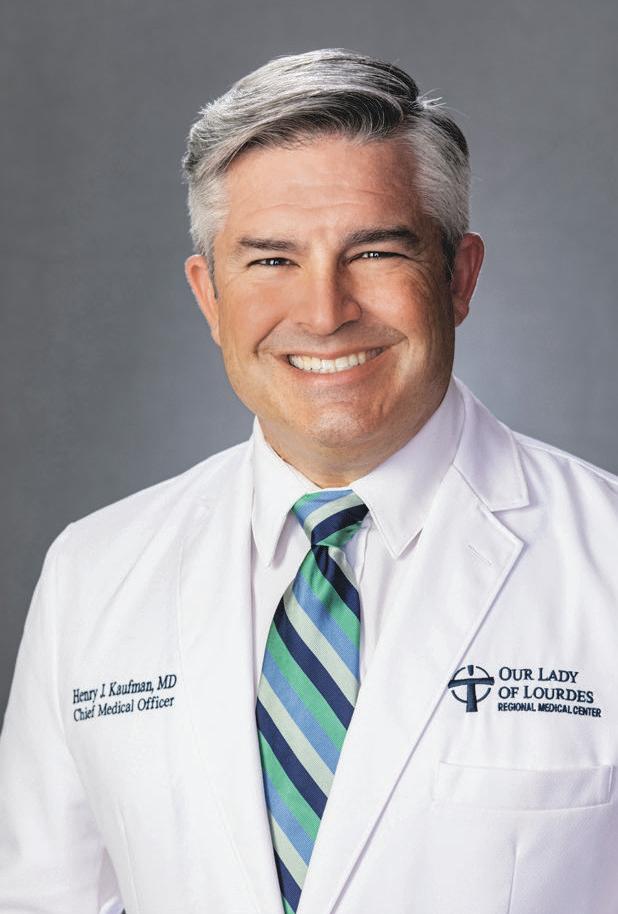
“Thereare things availablenow that we only dreamedabout 30 yearsago,” Dr.Kaufman notes, includingnewer formsof chemotherapy that,unliketheir more toxic predecessors,unleash thepotential of theimmunesystem. Essentially, thesenewer options usethe immune systemto aggressively targetcancer in thebody.
“Theresults we areseeingare so dramatic,”headds, “thatweare having to change theparadigmofhow we deal with cancer surgically andwithother therapeutic options.It’sanexcitingtimeto be in cancer care.”
Earlydetection is keytothe notedincreaseinsurvivorship, Dr.Kaufman shares. Continueddevelopmentsindiagnosticimaging,for instance,makeitpossibletofind cancer in itsinfancy, when apatienthas thebestpotential forsuccessful treatment, recovery and, ultimately,survival.
“We’re able to take care of some problemsthat, traditionally, we used to have a very heartfeltand sadconversationabout,” Dr.Kaufman says.“We’reoffering hope and options to people that just wasn’t therebefore. If we follow routinescreening recommendationsfor breast,colon,prostateand otherthings, we’regoing to find theseproblemsearly.Therearen’tmanycancers outthere that we can’tcureintheir earlieststages.”
